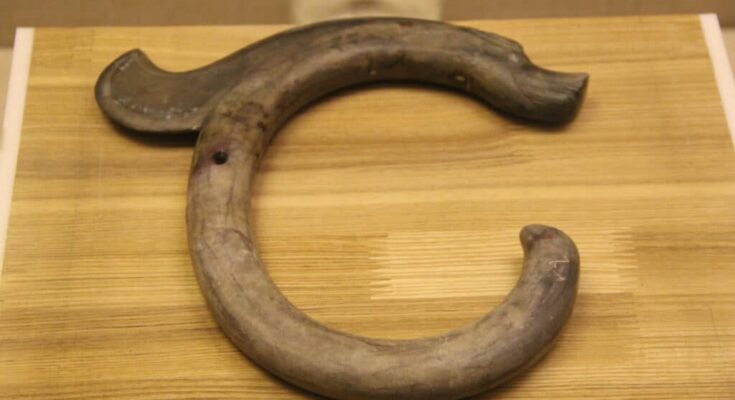
In China, a group of researchers has found a jade dragon artifact in a tomb that is around 5,000 years old. The tomb is in Chifeng, a city in the Inner Mongolia region.
The jade dragon is about six inches long and four inches wide. It was discovered in a round tomb that had an altar nearby. Inside the tomb, researchers also found human bones and many pieces of pottery. These included items such as cups, basins, and pots shaped like tripods.
This tomb dates back to a time when the Hongshan culture was at its peak in the area. People from this culture farmed, built large towns, and constructed detailed objects. The jade dragon is now the largest ever found from the Hongshan culture, according to reports from the Xinhua news agency.
Jade dragon artifact is “very nice” but “it is not that unique”
Gideon Shelach-Lavi, a professor of East Asian Studies at The Hebrew University of Jerusalem, shared his thoughts on the jade dragon discovery, saying that while it’s a good find, it’s not entirely unique.
Shelach-Lavi, who has previously worked on excavations in Chifeng but was not involved in this particular discovery, mentioned that similar-sized jade artifacts have been found in other tombs linked to the Hongshan culture.
Archaeologists in China have unearthed the largest jade dragon ever discovered from the Neolithic Hongshan culture at a tomb site in Chifeng, Inner Mongolia. The artifact measures 15.8 cm long, 9.5 cm wide, and 3 cm thick. It is found in a site with a unique circular tomb and… pic.twitter.com/PVuAQuSE4C
— Xiaohui Wang 王晓辉 (@wangxh65) September 23, 2024
He also pointed out that it’s unclear if these objects truly represent dragons. Shelach-Lavi explained that since we don’t fully understand what these jade pieces symbolized during that time, calling them “dragons” might not be accurate.
The site where researchers found the jade artifacts and human remains is more than just a tomb. Shelach-Lavi described it as a ritualistic structure that includes graves of specific individuals.
Largest stone burial mound from late Hongshan culture
Officials believe these discoveries offer new insight into the lives of Neolithic communities in the region. Sun Jinsong, director of the Inner Mongolia Institute of Cultural Relics and Archaeology, called it the largest stone burial mound from the late Hongshan culture ever found in Inner Mongolia.
Speaking at a press conference, he said that the range of jade artifacts found is helping to fill important gaps in our knowledge about how this ancient civilization used jade.
Researchers are continuing their work at the site, using methods such as radiocarbon dating and topographic mapping. Jia Xiaobing, a researcher from the Chinese Academy of Social Sciences’ Institute of Archaeology, pointed out that a similar ritual complex was found earlier at Niuheliang, about 90 miles from Chifeng.
Jia noted that the consistent design seen across these sites suggests that the Hongshan ancestors likely shared a common belief system.



